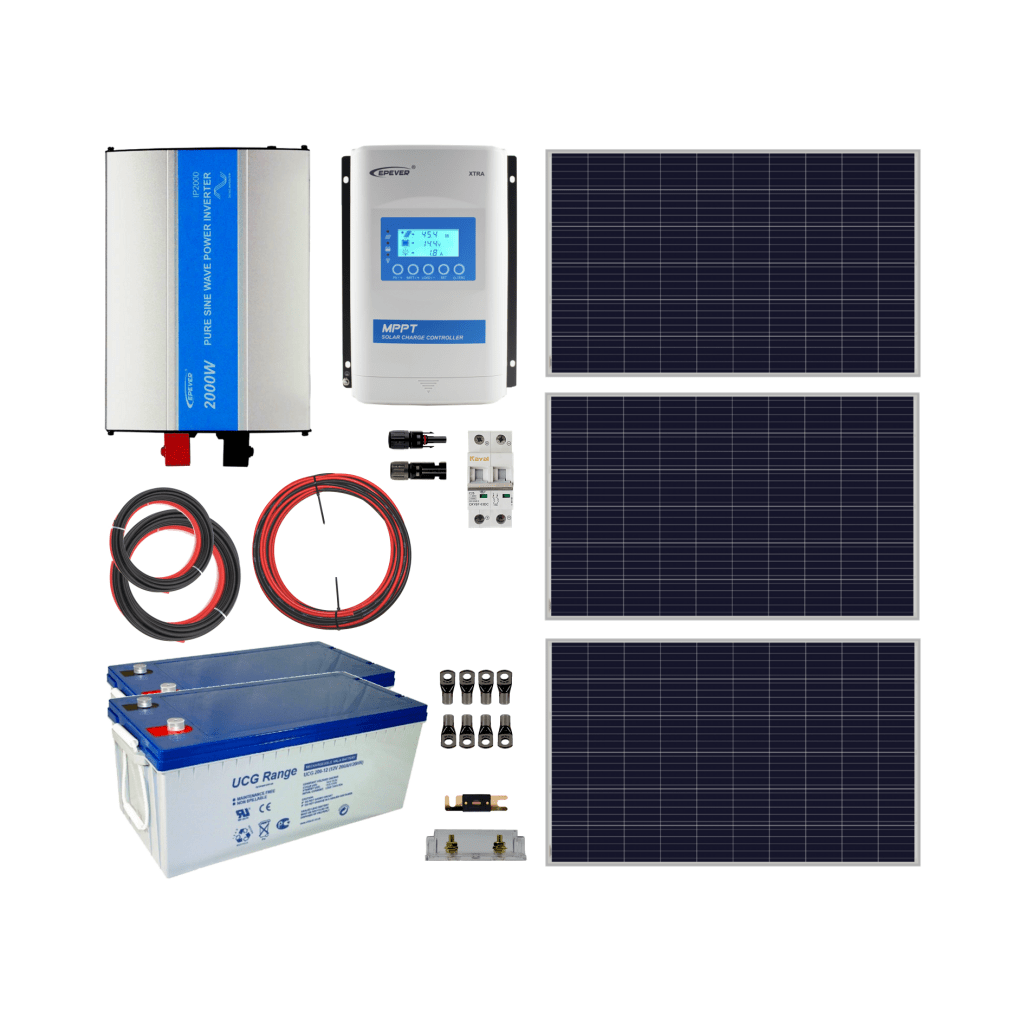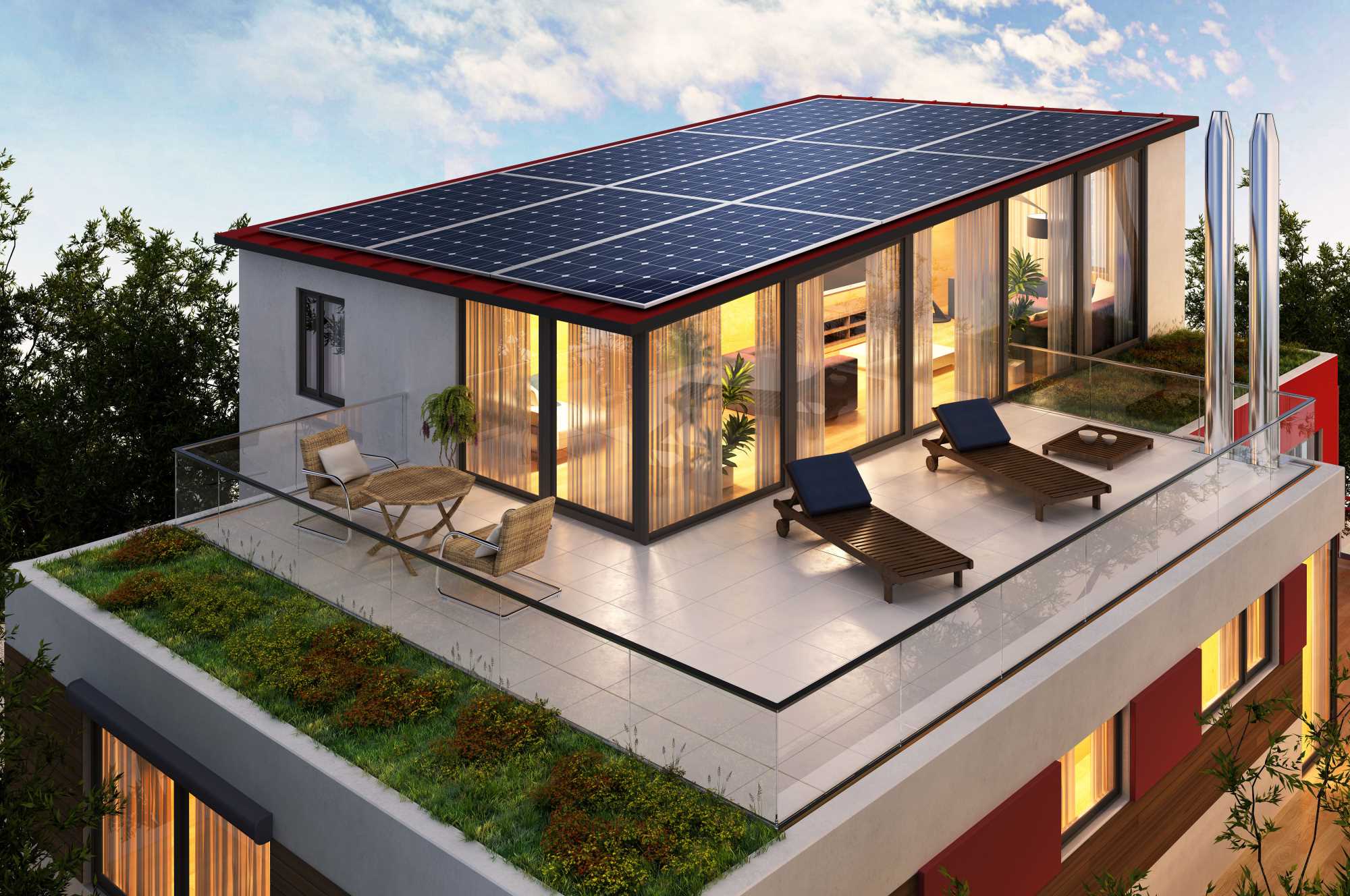

Solar panels are far more efficient when they directly face the Sun, and they last longer when they are rigid and well cooled.
OFF GRID SOLAR KIT INSTALL
DIY Solar Power System Setup Step 5 - Installing Solar Panelsįinally, it’s time to build the panel support and install the solar array. We talk about this in part 3 of this series. In order to reduce costs, most solar setups have their main power electronics - the charge controller(s) and inverter(s) - as well as safety shutoffs, fuses, and breakers in the battery room as well. However, if you go with less expensive unsealed batteries, you will have to build in some ventilation in to your battery house in order to prevent buildup of explosive hydrogen gas, which these types of batteries release in small amounts when charging. Batteries take up a fair amount of room, they need to be protected from kids or critters that might hurt themselves by touching the contacts or might accidentally damage the battery and release the acids inside.Īdditionally, most types of batteries need some amount of temperature control, and don’t do well with freezing weather. Once you have the components ordered, you would be ready to build your battery house, which may be a room in your existing home, part of the garage, or a separate shed. Step 4 - Building Your Solar Battery House or Compartment We talk about this in part 2 of this series. Choosing the overall voltage of each leg, as well as which loads should be AC vs DC.Your battery bank capacity, while considering battery type.The type and size of your charge controller (MPPT vs PWM, etc).The number and size of your solar cells.There are many choices to make at this point including: Once you have chosen the placement of the solar panels, you will have an idea of the power power potential of you site, and will be able to choose and order the proper components for your system. Solar System Design Diagram Step 3 - Ordering the Right Solar System Components Choosing the right spot to prevent excessive shading and to ensure proper access and passive cooling for your solar panel can more than double the efficiency of your solar panels over their lifetime. Often, the top of the house is not the most efficient place for an off grid solar array. Next, we take care to find and plan for the right site. Step 2 – Choosing the Right Place for Your Panels Is Essential Getting this right will be a big portion of part one of this guide. Renewable energy systems are inherently variable, and therefore understanding daily and yearly rhythms of your family’s energy usage is essential in planning an efficient system. The most important thing to know, when getting ready to build an off grid solar system, is how much energy you need, as well as how you energy usage changes throughout the day and year. Step 1 - Designing a DIY Solar System that Meets Your Needs Here is an overiew of the steps I’ll take you through over the course of this three part guide. Making the effort to follow a proper design process saves you money, time, and makes the process of going off the grid a pleasant one. Part 3 - Solar Energy Installation Overview of Building An Off Grid Solar Systemĭesigning your own self-sufficient solar power system must start with your end user’s needs in mind.Part 2 - Choosing the Correct Components.Part 1 - Overview, Designing Your System, Choosing the Right Site.

And, I’ll save you money at the same time. While there is a lot of terminology to wade through, in this guide I’ll cut through the jargon and simplify the process of building an solar system. Going off grid with solar power doesn’t have to be hard. Here, I’ve distilled down everything I’ve learned about off grid solar energy over the last 5 years, in to this easy to follow but comprehensive guide.
OFF GRID SOLAR KIT FREE
Getting started generating free solar power is really not as hard as it seems.


 0 kommentar(er)
0 kommentar(er)
